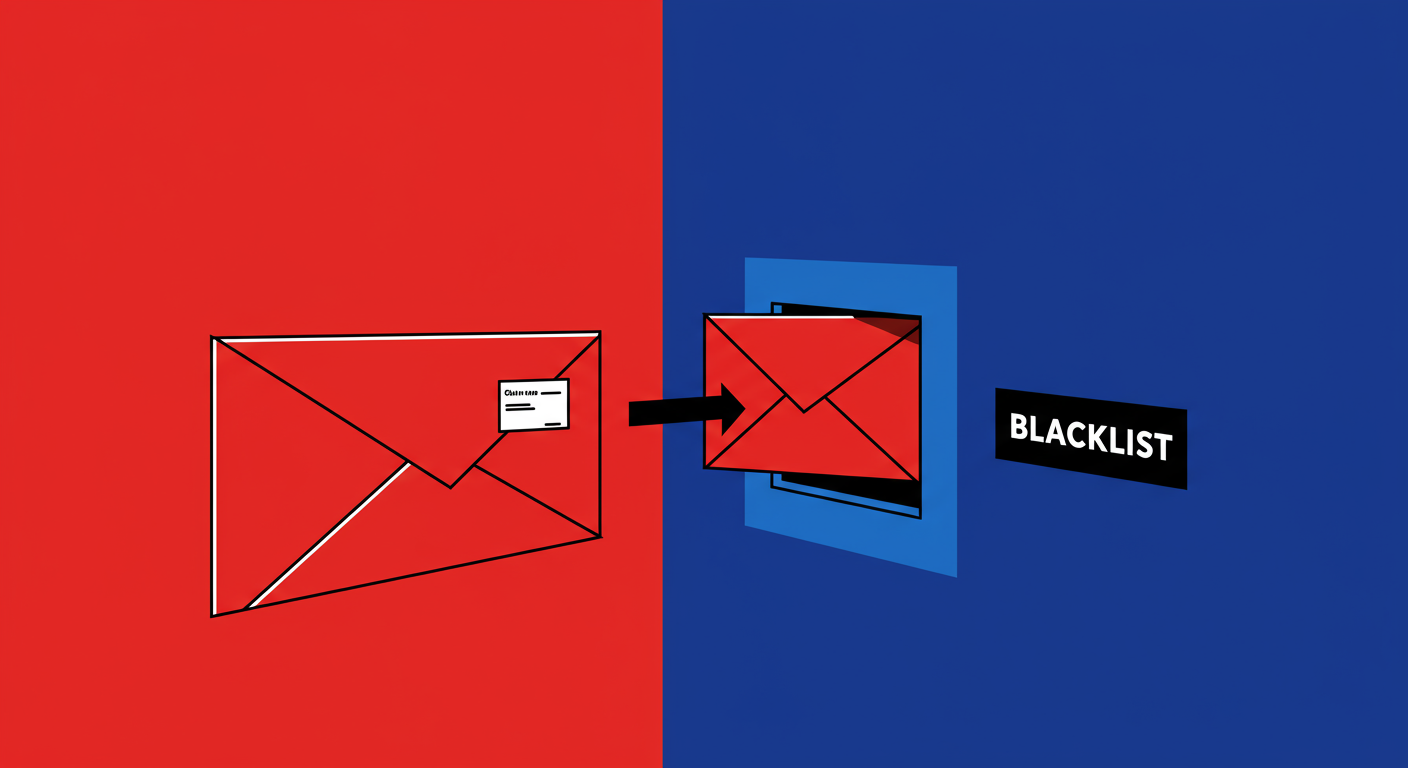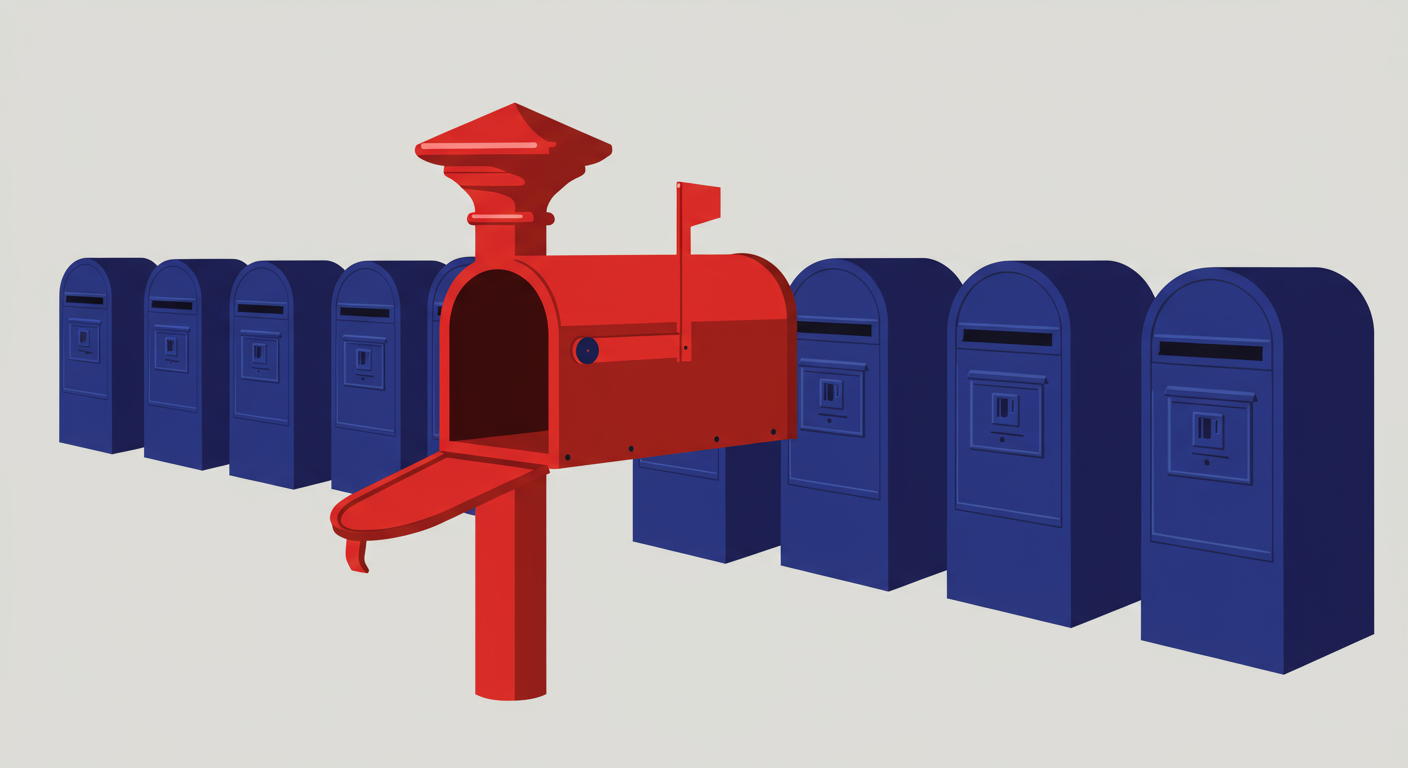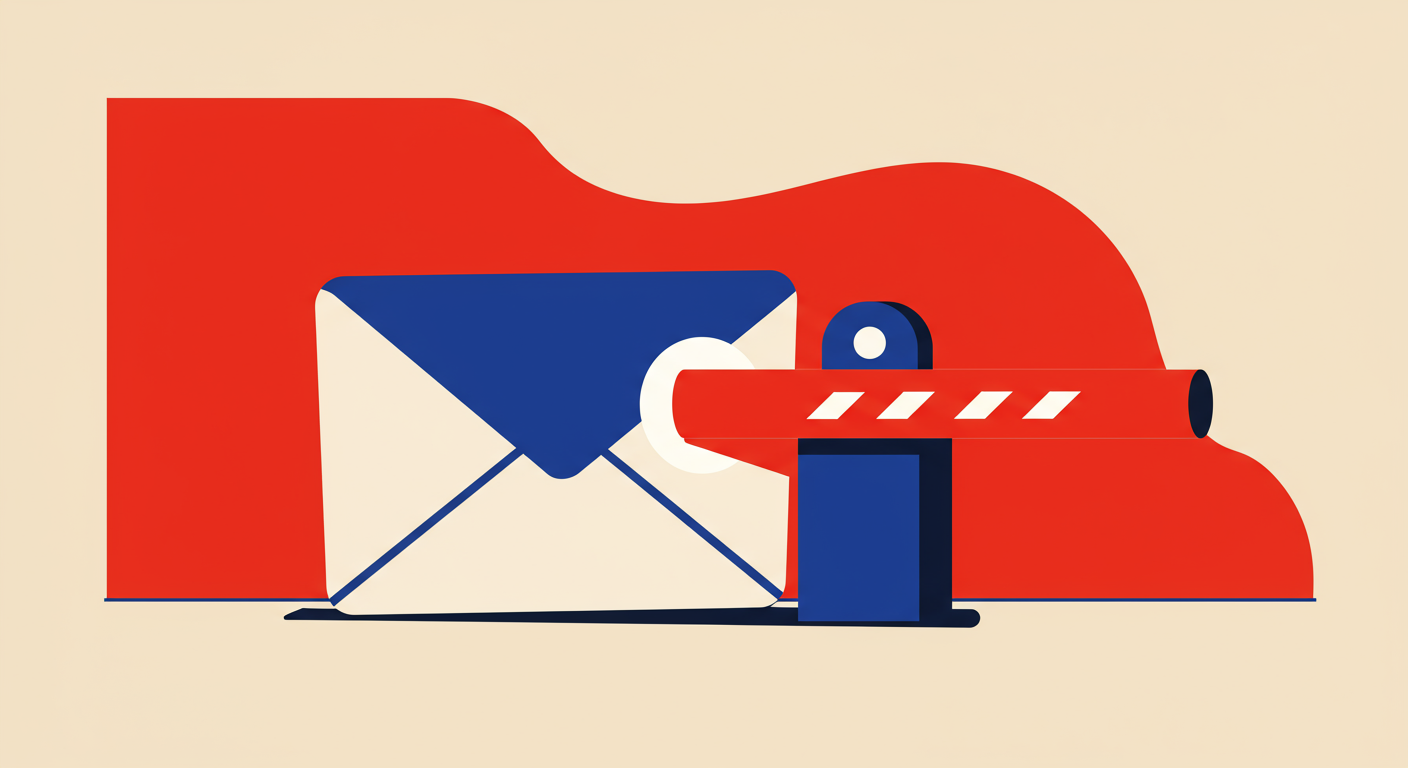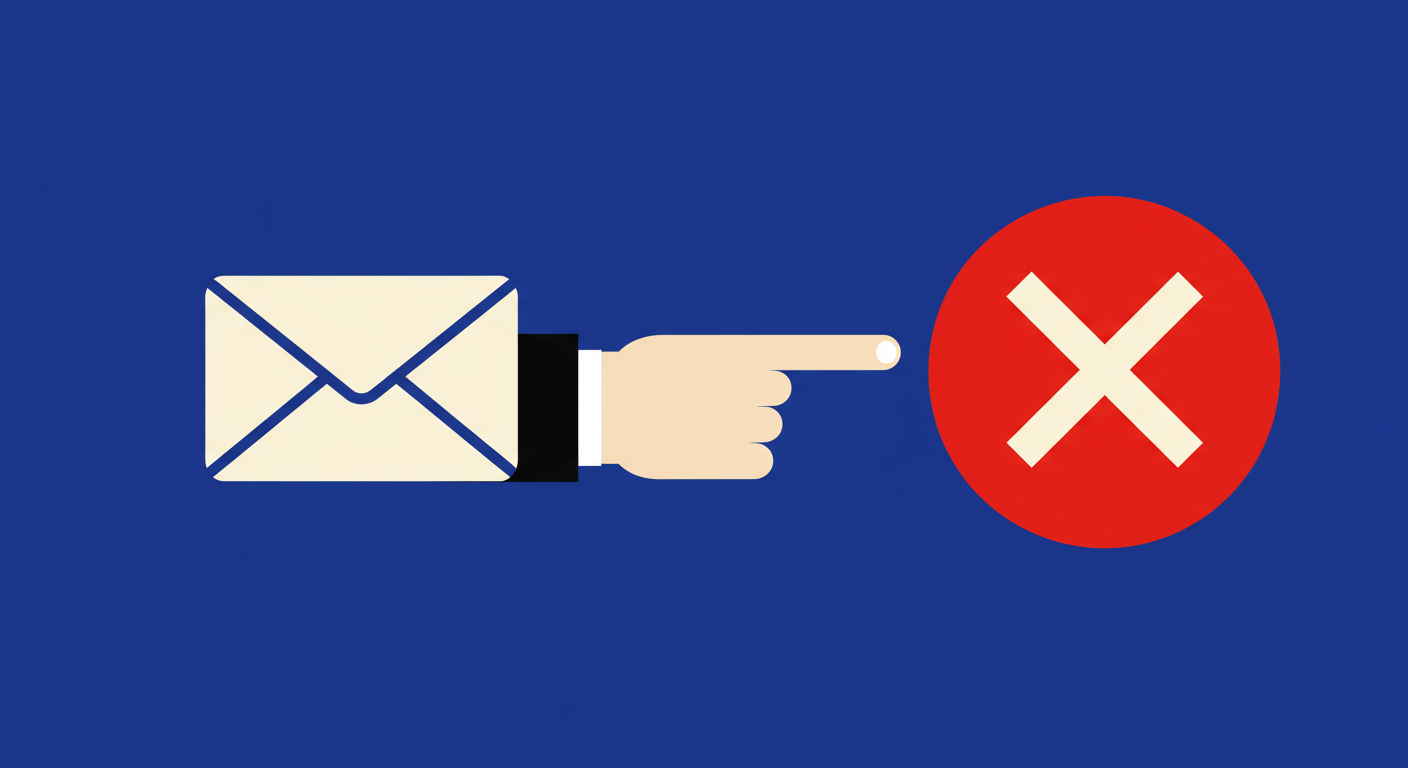How email blacklists actually work: a simple guide



It’s a feeling many email marketers know all too well. You’ve crafted the perfect email, your audience is waiting, and you hit send. But then, nothing. Your open rates plummet, and you start getting bounce notifications that your messages were rejected. One of the most common, and often misunderstood, reasons for this is landing on an email blacklist. These lists are a fundamental part of how the internet keeps our inboxes clean, but they can be a major headache if you end up on one.
Understanding how these blacklists (or blocklists) actually work is the first step to not only getting off one, but more importantly, staying off them for good. It’s not some arbitrary system designed to punish marketers. It's a defense mechanism for the entire email ecosystem, and playing by the rules is the best way to ensure your messages get delivered.
At its core, an email blacklist is a real-time database that contains a list of IP addresses or domains that are believed to be sending spam. Internet Service Providers (ISPs) like Gmail, Yahoo, and Microsoft, along with anti-spam organizations and even individual corporations, use these lists to filter incoming emails. When an email server receives a message, it checks the sender's IP address and domain against one or more of these blocklists. If there’s a match, the email can be rejected outright or sent straight to the spam folder.

It's important to distinguish between the two main types of blacklisting. First, there's IP blacklisting. This is when the IP address of the server sending your emails gets flagged. If you use a shared email service provider, this could mean that the bad behavior of another sender using the same IP address is affecting your deliverability. This is less common with reputable providers who monitor their networks closely, but it can happen.
Second, and more commonly what I see affecting businesses, is domain blacklisting. This is when your specific sending domain (e.g., yourcompany.com) is added to a blacklist. This is tied directly to your own sending practices and reputation. A domain can be blacklisted even if your IP address is clean, and it follows you no matter which email provider you use. This is why maintaining a good domain reputation is so critical for long-term email success.
These blocklists are maintained by a variety of organizations. Some are major non-profits like Spamhaus and SURBL, which are widely used across the internet. Others are run by commercial entities like Barracuda. Then there are the internal blacklists, which are private and used exclusively by major providers like Microsoft and Google. Getting on one of these internal lists can be particularly tricky, as their listing criteria and removal processes are often less transparent.
Landing on a blacklist isn't a matter of bad luck- it's almost always a direct result of your sending practices. Mailbox providers and anti-spam services look for specific signals that indicate a sender might not be following best practices. If you trigger enough of these signals, your IP or domain will be flagged.
Some of the most common reasons I see senders getting blacklisted include:
Ultimately, these all point back to a central theme: consent and engagement. If you're sending emails to people who didn't ask for them or no longer find them valuable, you're going to see high complaint rates and low engagement, which are the fastest tickets to a blocklist.
If you're experiencing a sudden drop in deliverability, checking for a blacklist placement is a crucial first step. You can’t fix a problem you don’t know you have. While some bounce messages will explicitly state that you were rejected due to a blacklist listing, this isn't always the case. Often, the only symptom is a silent drop in performance.
Luckily, there are many public tools available that monitor the most common DNS-based blacklists. You can use a free tool, like the one we've built at Suped, to check your domain's status across dozens of well-known blacklists. Simply enter your domain name below to see if you are listed on any major blocklists.
 Spamhaus
Spamhaus 0Spam
0Spam Cisco
Cisco NoSolicitado
NoSolicitado URIBL
URIBL abuse.ro
abuse.ro ALPHANET
ALPHANET Anonmails
Anonmails Ascams
Ascams BLOCKEDSERVERS
BLOCKEDSERVERS Calivent Networks
Calivent Networks EFnet
EFnet
 JustSpam
JustSpam Kempt.net
Kempt.net
 NordSpam
NordSpam RV-SOFT Technology
RV-SOFT Technology
 Scientific Spam
Scientific Spam Spamikaze
Spamikaze SpamRATS
SpamRATS SPFBL
SPFBL Suomispam
Suomispam System 5 Hosting
System 5 Hosting Team Cymru
Team Cymru Validity
Validity www.blocklist.de Fail2Ban-Reporting Service
www.blocklist.de Fail2Ban-Reporting Service ZapBL
ZapBL 2stepback.dk
2stepback.dk Fayntic Services
Fayntic Services ORB UK
ORB UK technoirc.org
technoirc.org TechTheft
TechTheft Spamhaus
Spamhaus 0Spam
0Spam Cisco
Cisco NoSolicitado
NoSolicitado URIBL
URIBL abuse.ro
abuse.ro ALPHANET
ALPHANET Anonmails
Anonmails Ascams
Ascams BLOCKEDSERVERS
BLOCKEDSERVERS Calivent Networks
Calivent Networks EFnet
EFnet
 JustSpam
JustSpam Kempt.net
Kempt.net
 NordSpam
NordSpam RV-SOFT Technology
RV-SOFT Technology
 Scientific Spam
Scientific Spam Spamikaze
Spamikaze SpamRATS
SpamRATS SPFBL
SPFBL Suomispam
Suomispam System 5 Hosting
System 5 Hosting Team Cymru
Team Cymru Validity
Validity www.blocklist.de Fail2Ban-Reporting Service
www.blocklist.de Fail2Ban-Reporting Service ZapBL
ZapBL 2stepback.dk
2stepback.dk Fayntic Services
Fayntic Services ORB UK
ORB UK technoirc.org
technoirc.org TechTheft
TechTheft Spamhaus
Spamhaus 0Spam
0Spam Cisco
Cisco NoSolicitado
NoSolicitado URIBL
URIBL abuse.ro
abuse.ro ALPHANET
ALPHANET Anonmails
Anonmails Ascams
Ascams BLOCKEDSERVERS
BLOCKEDSERVERS Calivent Networks
Calivent Networks EFnet
EFnet
 JustSpam
JustSpam Kempt.net
Kempt.net
 NordSpam
NordSpam RV-SOFT Technology
RV-SOFT Technology
 Scientific Spam
Scientific Spam Spamikaze
Spamikaze SpamRATS
SpamRATS SPFBL
SPFBL Suomispam
Suomispam System 5 Hosting
System 5 Hosting Team Cymru
Team Cymru Validity
Validity www.blocklist.de Fail2Ban-Reporting Service
www.blocklist.de Fail2Ban-Reporting Service ZapBL
ZapBL 2stepback.dk
2stepback.dk Fayntic Services
Fayntic Services ORB UK
ORB UK technoirc.org
technoirc.org TechTheft
TechTheft Spamhaus
Spamhaus 0Spam
0Spam Cisco
Cisco NoSolicitado
NoSolicitado URIBL
URIBL abuse.ro
abuse.ro ALPHANET
ALPHANET Anonmails
Anonmails Ascams
Ascams BLOCKEDSERVERS
BLOCKEDSERVERS Calivent Networks
Calivent Networks EFnet
EFnet
 JustSpam
JustSpam Kempt.net
Kempt.net
 NordSpam
NordSpam RV-SOFT Technology
RV-SOFT Technology
 Scientific Spam
Scientific Spam Spamikaze
Spamikaze SpamRATS
SpamRATS SPFBL
SPFBL Suomispam
Suomispam System 5 Hosting
System 5 Hosting Team Cymru
Team Cymru Validity
Validity www.blocklist.de Fail2Ban-Reporting Service
www.blocklist.de Fail2Ban-Reporting Service ZapBL
ZapBL 2stepback.dk
2stepback.dk Fayntic Services
Fayntic Services ORB UK
ORB UK technoirc.org
technoirc.org TechTheft
TechTheft Spamhaus
Spamhaus 0Spam
0Spam Cisco
Cisco NoSolicitado
NoSolicitado URIBL
URIBL abuse.ro
abuse.ro ALPHANET
ALPHANET Anonmails
Anonmails Ascams
Ascams BLOCKEDSERVERS
BLOCKEDSERVERS Calivent Networks
Calivent Networks EFnet
EFnet
 JustSpam
JustSpam Kempt.net
Kempt.net
 NordSpam
NordSpam RV-SOFT Technology
RV-SOFT Technology
 Scientific Spam
Scientific Spam Spamikaze
Spamikaze SpamRATS
SpamRATS SPFBL
SPFBL Suomispam
Suomispam System 5 Hosting
System 5 Hosting Team Cymru
Team Cymru Validity
Validity www.blocklist.de Fail2Ban-Reporting Service
www.blocklist.de Fail2Ban-Reporting Service ZapBL
ZapBL 2stepback.dk
2stepback.dk Fayntic Services
Fayntic Services ORB UK
ORB UK technoirc.org
technoirc.org TechTheft
TechTheftOnce you identify which blacklist you're on, you can begin the remediation process. Each blacklist has its own delisting procedure. Some have self-service removal forms, while others may require you to contact them and prove that you have resolved the underlying issue that caused the listing. The key is to first fix the problem- whether it's cleaning your list, improving your content, or securing a compromised system- before you request removal. Simply getting off a blacklist without fixing the root cause will only lead to you being listed again.

To wrap things up, email blacklists are not the enemy. They are a necessary component of a healthy email environment that protects all of us from a flood of unwanted messages. Understanding how they function is essential for any serious email sender.
The path to staying off these lists isn't paved with technical hacks or quick fixes. It's built on a foundation of respect for the inbox. That means sending only to people who have given you explicit permission, regularly cleaning your list of inactive and invalid contacts, and consistently providing content that your audience values. Focus on these fundamentals, and you'll build a strong sender reputation that keeps you off blocklists and ensures your messages land where they belong.
By treating email as a conversation rather than a broadcast, you foster a positive relationship with both your subscribers and the mailbox providers that serve them. That is the ultimate secret to great deliverability.












